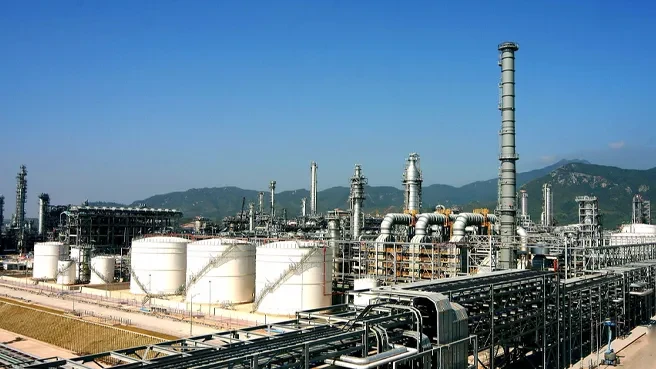
Understanding the Role of Preservatives in Milk Products and Their Impact on Shelf Life
Milk Preservatives Understanding Their Role and Impact
Milk, a staple in many diets around the world, is highly perishable due to its rich nutrient content and the presence of microorganisms. To extend its shelf life, various preservatives are used, which can significantly influence its safety, flavor, and nutritional value. This article delves into the types of preservatives used in milk, their functions, and the controversies surrounding their use.
Types of Milk Preservatives
The use of preservatives in milk is crucial for preventing spoilage and ensuring consumer safety. Common preservatives include
1. Sodium Benzoate Often used in conjunction with other preservatives, sodium benzoate is effective at low pH levels. It inhibits the growth of bacteria, yeast, and molds, making it a popular choice for flavored milk products.
2. Potassium Sorbate Similar to sodium benzoate, potassium sorbate is another widely used preservative that helps prolong shelf life by preventing the growth of molds and yeasts.
3. Calcium Propionate Primarily used in bread production, calcium propionate can also be found in some dairy products. It helps to inhibit the growth of mold and bacteria, contributing to the overall preservation of the product.
4. Lactic Acid Naturally occurring in fermented milk products, lactic acid acts as a preservative by creating an acidic environment that deters harmful bacteria while promoting beneficial ones.
5. Natamycin This natural antifungal agent is often used to extend the shelf life of dairy products by preventing mold growth, especially in cheeses.
Functions of Preservatives
milk preservatives

The primary function of milk preservatives is to inhibit microbial growth. By doing so, they help in
- Extending Shelf Life With the help of preservatives, milk can remain fresh for a longer period, reducing food waste and increasing availability.
- Maintaining Flavor and Quality Preservatives help retain the fresh taste and nutritional quality of milk, ensuring that consumers receive a high-quality product.
- Enhancing Safety By preventing the growth of pathogens and spoilage organisms, preservatives play a crucial role in food safety, protecting consumers from potential health risks.
Controversies and Health Concerns
Despite their benefits, the use of preservatives in milk is not without controversy. Some consumers and health advocates raise concerns about the safety of these additives, citing potential allergic reactions, toxicity, and long-term health effects. Critics argue that relying on preservatives may mask underlying quality issues in milk production and processing.
Furthermore, there is an ongoing debate about natural versus synthetic preservatives. Many consumers prefer products labeled as “natural” or “organic,” which may use fewer or no synthetic additives. As a response to these preferences, some dairy producers have started to explore natural preservation methods, such as high-pressure processing or natural fermentation techniques.
Conclusion
Milk preservatives play a vital role in ensuring the safety, quality, and longevity of dairy products. While they provide significant benefits in preventing spoilage and bacterial growth, the choice of using preservatives is a personal one and varies among consumers. As awareness of food additives and health implications continues to grow, it is essential for consumers to be informed about the preservatives in their milk and make choices that align with their health and dietary preferences. In the ever-evolving landscape of food science, the future may hold innovative preservation methods that align with both safety and consumer demands for cleaner labels.
-
Buy High-Quality Trichloroisocyanuric Acid for Sale | TCCA 90% SupplierNewsAug.30,2025
-
Pure Sodium Dichloroisocyanurate Dihydrate | Powerful DisinfectantNewsAug.29,2025
-
Industrial Chemicals: Quality & Purity for Every IndustryNewsAug.28,2025
-
Nitrile Rubber Honoring Strict Production StandardsNewsAug.22,2025
-
Aspartame Ingredients Honoring Food Safety ValuesNewsAug.22,2025
-
Fertilizer for Balanced Plant NutritionNewsAug.22,2025
-
Cyanide Gold Processing with High Purity AdditivesNewsAug.22,2025
Hebei Tenger Chemical Technology Co., Ltd. focuses on the chemical industry and is committed to the export service of chemical raw materials.
-

view more DiethanolisopropanolamineIn the ever-growing field of chemical solutions, diethanolisopropanolamine (DEIPA) stands out as a versatile and important compound. Due to its unique chemical structure and properties, DEIPA is of interest to various industries including construction, personal care, and agriculture. -

view more TriisopropanolamineTriisopropanolamine (TIPA) alkanol amine substance, is a kind of alcohol amine compound with amino and alcohol hydroxyl, and because of its molecules contains both amino and hydroxyl. -

view more Tetramethyl Thiuram DisulfideTetramethyl thiuram disulfide, also known as TMTD, is a white to light-yellow powder with a distinct sulfur-like odor. It is soluble in organic solvents such as benzene, acetone, and ethyl acetate, making it highly versatile for use in different formulations. TMTD is known for its excellent vulcanization acceleration properties, which makes it a key ingredient in the production of rubber products. Additionally, it acts as an effective fungicide and bactericide, making it valuable in agricultural applications. Its high purity and stability ensure consistent performance, making it a preferred choice for manufacturers across various industries.





